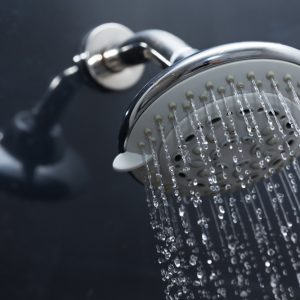 From the irrigation system in the yard to the amount of water used to flush the toilet every day, water efficiency measures can easily cut your water usage in half.
From the irrigation system in the yard to the amount of water used to flush the toilet every day, water efficiency measures can easily cut your water usage in half.
Many people don’t worry about the amount of water they use in their home. After all, water isn’t all that expensive, and Utah very seldom has enforced water rationing for residences. However, Utah is a drought-prone state, and it’s important for all of us to do our part to save our natural resources.
There are many things that you can make into a habit in your home in order to reduce water waste. For example, turning off the sink while you’re brushing your teeth can save as much as 200 gallons of water per month. However, there are also things that you can do to update your plumbing system that will automatically save water without you doing a single thing differently. Here’s a look at some of the most water-efficient upgrades:
Low-Flow Shower Head
One of the first places to make a change is in your shower. This is an important step to make because while the shower isn’t usually the greatest consumer of water in the home, it is the consumer of the most valuable water. Hot water that we use in showers and baths utilizes both water and energy in order to heat it to our liking. Water heating can account for as much as 18% of your monthly utility bill. In addition, it should be noted that any shower head made before 1992 utilizes over twice as much water as the current limit!
Low-flow showerheads work in two different ways. Aerating shower heads will mix air into the waterstream, which will provide the same amount of pressure with less water. Laminar-flow showerheads, on the other hand, separate the water more into individualized, powerful streams.
When making a purchasing decision on showerheads, check both the volume of water used, as well as the pressure.
Toilets
About 24% of residential water usage literally goes down the toilet. Toilets are often the single most high-volume user of water inside of the house. That’s why modifying your toilet to utilize less water will make a big dent in your water bill.
Earlier toilets created throughout the middle of the 20th century utilized as much as 7 gallons of water per flush! In the 90’s, conservation laws were put into effect which required toilets to cut back their water usage to 1.6 gallons of water. It took a while for design and tech alterations to enable the same quality and power with less water, but you’ll notice that modern low-flow toilets get the job done with a much lower volume of water.
Irrigation and Sprinklers
Toilets may be the biggest user of water inside the house, but outdoor irrigation is usually the winner overall. There are many things that you can do to reduce your outdoor water usage, from installing timers on your sprinklers to designing a water-efficient landscape. In order to avoid wasting water, follow these conservation rules:
Water the lawn in the evening or early in the morning to avoid evaporation.
Water deeply, not frequently. It’s better for your lawn.
Plant local species that can naturally deal with the climate.
Proper Plumbing Maintenance Saves Water
Oftentimes, the biggest contributor to water waste in the house is problems with plumbing. Clogs, leaks, and drips can all impact your monthly water usage. Being proactive in response to problems will save you water and money. If you’re looking to save more water in your home, give us a call. We can evaluate your plumbing system and help you identify the areas that will make the most difference. Proper, professional installation of new plumbing fixtures will ensure that they’re doing their best work.
